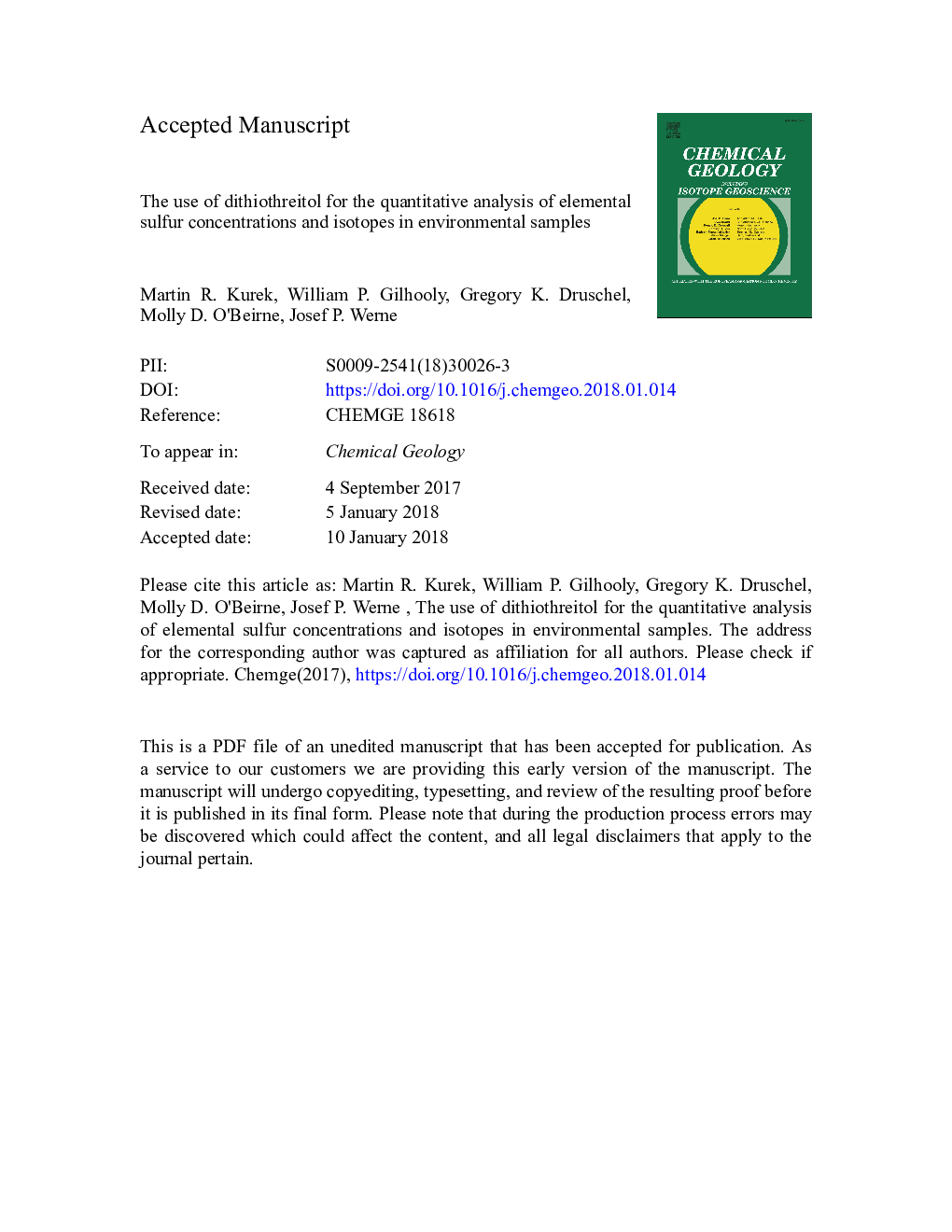| Article ID | Journal | Published Year | Pages | File Type |
|---|---|---|---|---|
| 8910328 | Chemical Geology | 2018 | 47 Pages |
Abstract
Determining the concentration and isotopic composition of elemental sulfur in modern and ancient environments is essential to improved interpretation of the mechanisms and pathways of sulfur utilization in biogeochemical cycles. Elemental sulfur can be extracted from sediment or water samples and quantified by converting to hydrogen sulfide. Alternatively, elemental sulfur concentrations can themselves be analyzed using HPLC and other methodologies; however, the preparation and analysis times can be long and these methods are not amenable to stable isotopic analysis. Current reduction methods involve the use of costly and specialized glassware in addition to toxins such as chromium chloride or cyanide to reduce the sulfur to hydrogen sulfide. The novel reduction method presented here uses dithiothreitol (DTT) as a less toxic reducing agent to obtain both elemental sulfur concentrations and isotopic composition from the same sample. The sample is dissolved in an aqueous or organic liquid medium and upon reaction with DTT, the elemental sulfur is volatilized as hydrogen sulfide and collected in a sulfide trap using an inexpensive gas extraction apparatus. The evolved sulfide concentrations can easily be measured for concentration, by absorbance spectrophotometery or voltammetry techniques, and then analyzed for sulfur isotopic composition. The procedure is quantitative at >93% recovery to dissolved elemental sulfur with no observed sulfur isotope fractionation during reduction and recovery. Controlled experiments also demonstrate that DTT is not reactive to sulfate, sulfite, pyrite, or organic sulfur.
Related Topics
Physical Sciences and Engineering
Earth and Planetary Sciences
Geochemistry and Petrology
Authors
Martin R. Kurek, William P. III, Gregory K. Druschel, Molly D. O'Beirne, Josef P. Werne,
